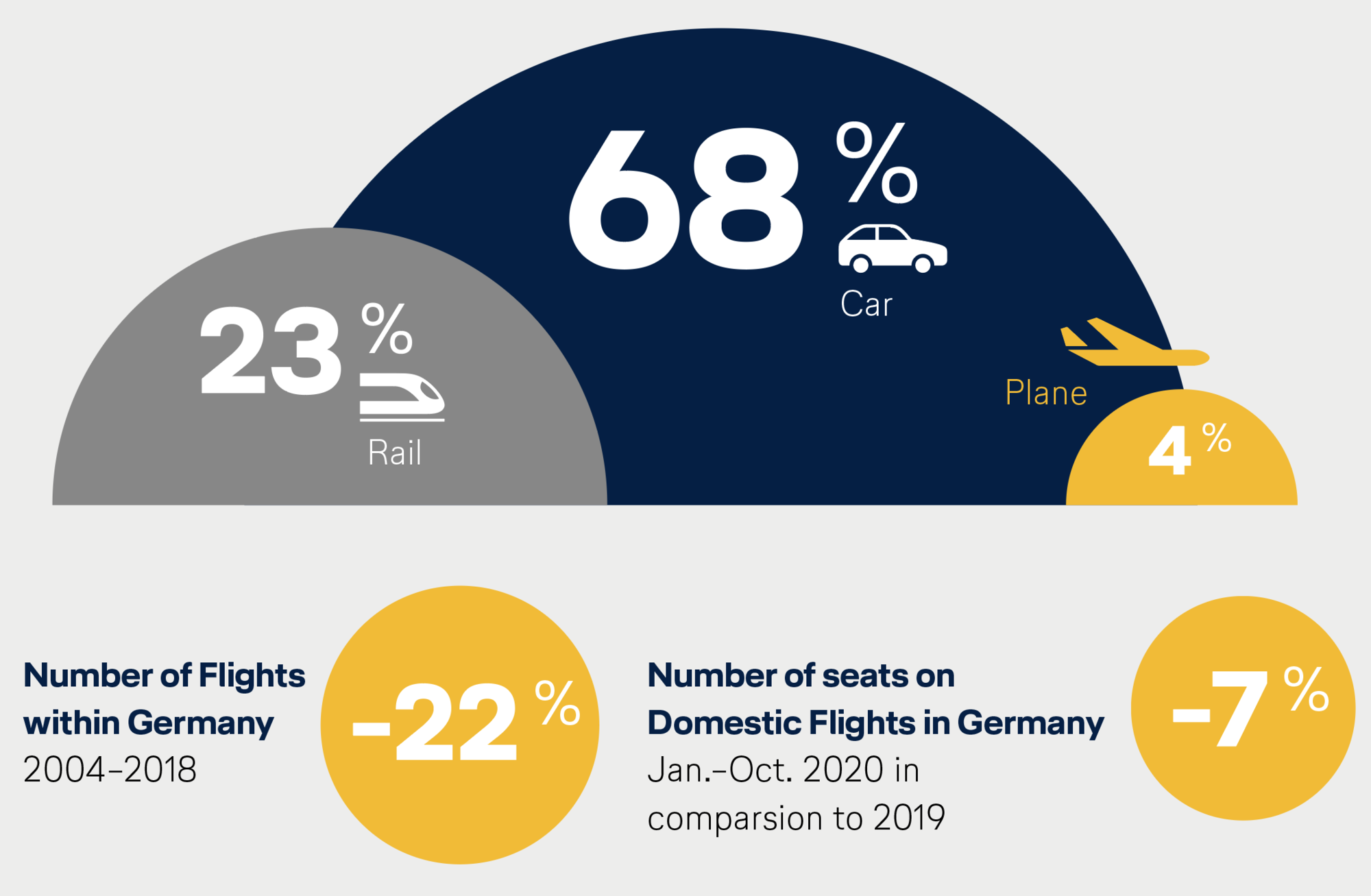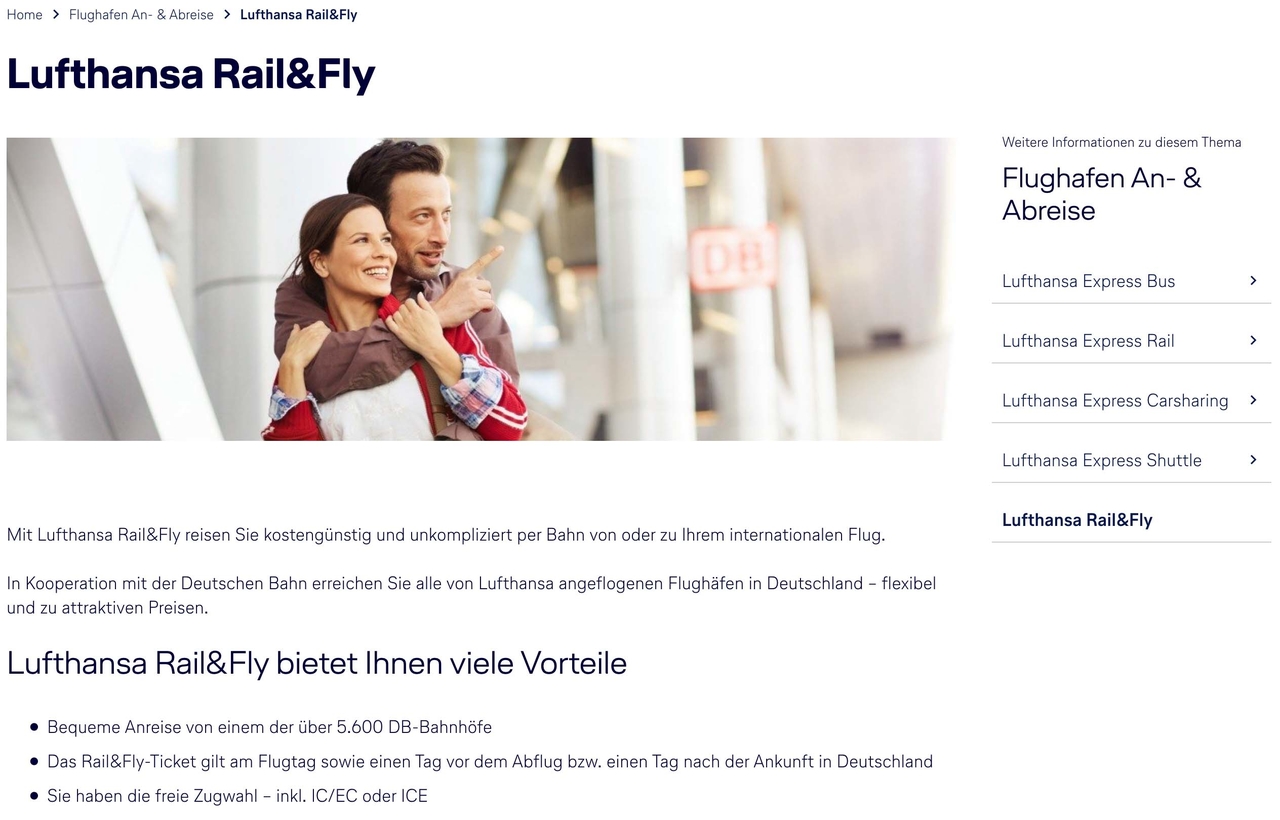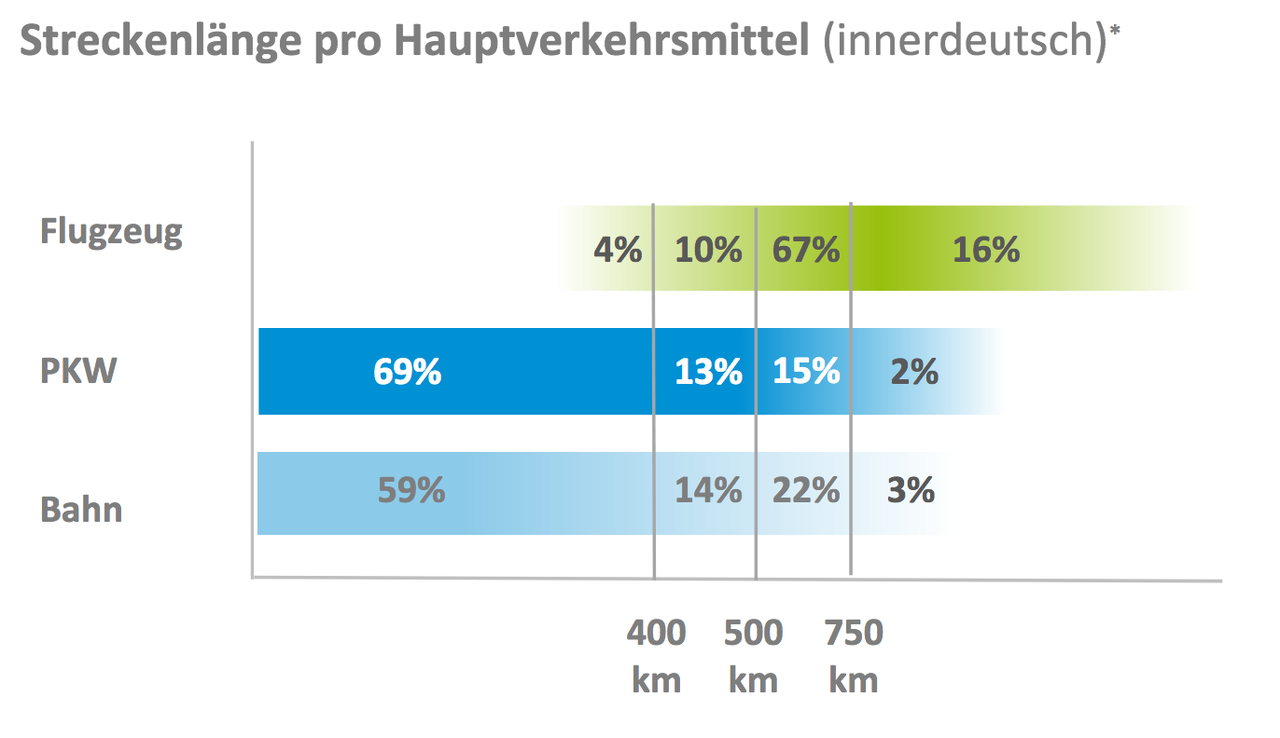Domestic traffic
Increasing Intermodality
The federal government wants to encourage travellers to move away from flights within Germany and to travel by train instead. Lufthansa, too, believes in intermodality. The nearer the destination, themore attractive it is to travel by train. However, domestic German flight connections play an important role in the functioning of the German air transport system as a whole. They account for 0.3 per cent of all CO₂ emissions in Germany.
Main Means of Transport for Journeys within Germany
Within Germany, air traffic accounts for 4 per cent. 96 per cent of the flights are longer than 400 kilometres.

Business Travel Traffic
For people travelling for business – who account for two thirds of passengers on German domestic flights – travel time is an important criterion. Three to four hours is the threshold time limit. If travel by train takes longer, flying is often the first choice and usually the only way of returning home on the same day. To attract more business travellers to rail, the high-speed network will have to be expanded. For example, Eurowings stopped serving the Berlin-Nuremberg route after the high-speed rail line connecting the two cities opened.
Improved Rail Connections at the Hubs
For many passengers, an internal flight in Germany is only the first stage en route to an international destination. Lufthansa carries passengers who are travelling abroad into the hubs of Frankfurt and Munich. This makes ecological and economic sense because it means the planes’ capacity is optimally used and outlying regions are connected to the international transport network. Lufthansa Express Rail offers a shuttle train to Frankfurt Airport from 14 German towns and cities. A passenger’s flight ticket is valid on the rail trip, seats are reserved, miles are credited and, if there are any delays, the passengers are rebooked onto the next available connections.
Lufthansa would like to establish this intermodal offering at the Munich hub, too. Unfortunately, there is no intercity train connection there. In total, only five German airports are connected to Deutsche Bahn’s intercity network. And the frequency of trains is falling: according to current data from the federal government, around 94,000 intercity trains stopped at airports in 2009. In 2019 – with rising passenger numbers – the equivalent figure was just under 80,000. In order for more passengers to opt for the train instead of the plane in future, the rail infrastructure relevant to air traffic must be upgraded. Internal German flights can be reduced or stopped on routes with highly efficient ICE connections.
Offering Covenience for Transfer Passengers
Transfer passengers check in their baggage at the departure airport and collect it at their destination. Hardly anyone would want to go without this convenience. For the train to be a real alternative for bringing people to the airport, we need ideas and concepts about how the baggage of transfer passengers can be accepted at the departure station and reliably transported to the flight, taking account of the security requirements. After all, passengers who want to make the whole journey by plane can also fly via foreign hubs, such as Paris, Amsterdam or Istanbul.
Main Means of Transport for Journeys within Germany
Within Germany, air traffic accounts for 4 per cent. 96 per cent of the flights are longer than 400 kilometres.

Further content on the topic
Rail&Fly
To Booking
You can simply book Rail&Fly tickets and the corresponding flight – all of the information in an overview.

Analysis
Climate Protection in Aviation
In August 2019, the Bundesverband der Deutschen Luftverkehrswirtschaft (BDL) analysed in detail the instruments for CO2 reduction, including options to shift transport.
